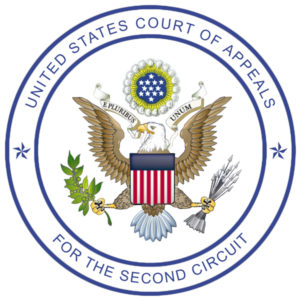December
2012
With Guidance from Connecticut Supreme Court, Second Circuit Affirms District Court’s Non-Coverage Decision
Back in March 2012, we reported a decision in which the Connecticut Supreme Court responded to three certified questions from the U.S. Court of Appeals for the Second Circuit and sua sponte overruled Aetna Casualty & Surety Co. v. Murphy, 206 Conn. 409, 538 A.2d 219 (1988), by determining that insurers now bear the burden of proving prejudice caused by late notice of an insured’s claim. To revisit that post, click here.
In light of the Connecticut Supreme Court’s responses to its certified questions, the Second Circuit recently affirmed the district court’s ruling that an accident involving an all-terrain vehicle (“ATV”) was not covered by the ATV owners’ homeowner’s liability policy, umbrella liability policy, or excess liability policy because, among other things, the accident site was not an “insured location” under the homeowner’s policy and the ATV owners failed to list the ATV on a declarations page as required by the umbrella policy. Arrowood Indemnity Co. v. King, 699 F.3d 735, 738-40 (2d Cir. 2012).
In Arrowood Indemnity Co. v. King, a child was injured when he fell from a skateboard while being towed by a rope attached to an ATV owned by defendants-appellants –- i.e., the Kings. Id. at 738. “The accident occurred near the Kings’ home on a portion of a private road located within the residential development managed by the Kings’ homeowners association.” Id. In the ensuing litigation, the district court granted summary judgment in favor of the insurers seeking to disclaim any duty to defend or indemnify the Kings for claims arising from the accident. Id.
On appeal, the Second Circuit sought guidance from the Connecticut Supreme Court “as to whether a negligent entrustment claim . . . should be deemed to arise where the subject vehicle was entrusted, where the vehicle was housed, or where the accident itself took place,” “whether an ‘insured location,’ as that term was used in the homeowner’s policy, could cover the portion of the private road where the accident in this case occurred,” and “whether post-accident, friendly social interactions belying any litigation intent . . . could justify delaying notice to an insurer under Connecticut insurance law.” Id. at 738-39. In responding to the Second Circuit’s first two certified questions, the Connecticut Supreme Court:
(1) held that under the Kings’ homeowner’s policy a negligent entrustment claim
brought under Connecticut law, regardless of the locus of the entrustment,
arises at the site of the injury-causing accident and (2) determined that the
portion of the private road where this accident happened was not an “insured
location” within the terms of the policy as that language is properly construed
under Connecticut insurance law.
Id. at 739. With respect to the third certified question, the Connecticut Supreme Court held that “social interactions unrelated to litigation do not justify delayed notice” to an insurer. Id.
As a result, the Second Circuit affirmed the district court’s determination that the site where the accident itself occurred is the only location-relevant in determining whether a homeowner’s policy provides coverage for a negligent entrustment claim and, therefore, the subject accident did not occur at an “insured location” under the Kings’ policy. Arrowood, 699 F.3d at 740. The Second Circuit also confirmed that “the Kings’ failure to list the ATV in the declarations was fatal to coverage under the umbrella policy” and, since “the excess liability policy ‘followed form’ with the umbrella policy, any potential liability excluded from coverage under the umbrella policy was automatically excluded from coverage under the excess liability policy as well.” Id. at 740-41.
Notably, while recognizing that the Connecticut Supreme Court’s answer to the third certified question was “rendered academic” by its other findings, the Second Circuit added that the Court’s answer to that question “may prove to be the most notable portion of that Court’s opinion.” Id. at 739 and n.3. Specifically, the Second Circuit observed:
Not only did the Court settle Connecticut law that friendly social interactions do not excuse an insured’s late notice of claim but it also took its response to our certified questions as an opportunity to overturn earlier case law by placing the burden of proving prejudice, resulting from a delayed notice of an accident, on the insurer and relieving the insured of the obligation to prove an absence of prejudice.
Id. at 739 n.3 (internal citation omitted). Indeed, in overruling Murphy, the Court upended over thirty years of Connecticut case law, reasoning that “the task of proving a negative is an inherently difficult one, and it may be further complicated by the opposing party’s interest in concealment.”
A copy of the Connecticut Supreme Court’s March 2012 decision is available here.
A copy of the Second Circuit’s subsequent decision is available here.




